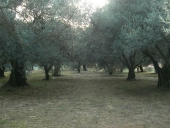




 .
.








































Iterations are fine, we don't have to be perfect
My 2nd Location:Florida HardinessZone:10 AHS:10 GDD:8500 Rainfall:2in/mth winter, 8in/mth summer, Soil:Sand pH8 Flat




Darnell Brawner wrote:
With the crazy cold weather the area got down to 16F but there are many olives that can take colder.
Its a bit of a long shot but starting small with a 10 trees and then expanding should cost me too much.
yet another victim of Obsessive Weeding Disorder

|
You would be much easier to understand if you took that bucket off of your head. And that goes for the tiny ad too!
The new purple deck of permaculture playing cards
https://www.kickstarter.com/projects/paulwheaton/garden-cards
|




